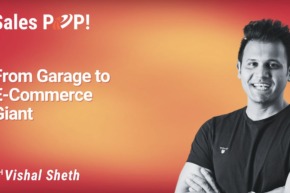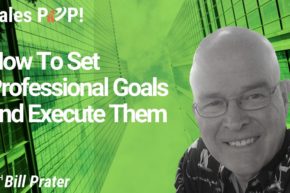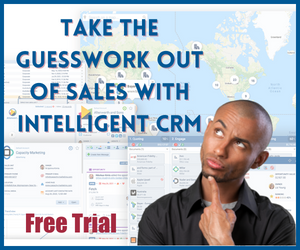In a recent episode of the expert interview series hosted by John Golden, listeners were treated to a wealth of knowledge from Wes Schaefer, a business fixer, author, speaker, and Air Force veteran. The conversation delved into the evolution of sales strategies in response to changing buyer behavior, particularly in the wake of the COVID-19 pandemic and the rise of artificial intelligence. This blog post will break down the key insights and actionable advice shared by Wes, focusing on his five proven steps to making every sale.
The Changing Landscape of Sales
Wes Schaefer begins by acknowledging the significant shifts in buyer behavior over the years. He notes that while buyers once faced “paralysis by analysis” due to a lack of information, they are now overwhelmed with too much information. This change necessitates a new approach for sales professionals, who must now help buyers navigate their choices and instill confidence in their decisions.
Wes emphasizes that his five proven steps to making every sale are timeless and that he has adapted to these changes. He draws a parallel between his experience with technology—specifically, his switch to Apple computers for their reliability—and the need for sales strategies that work consistently without interruption.
The ABCDE of Selling
Wes introduces his unique framework, the ABCDE of selling, which he describes as a circular process rather than a linear pipeline or funnel. This approach reflects the ongoing nature of customer relationships and emphasizes the importance of nurturing these connections over time.
1. Attract
The first step is to attract potential customers through various means, such as:
- Advertising: Utilize targeted ads to reach your ideal audience.
- Trade Shows: Participate in industry events to showcase your products and services.
- Cold Calling: Reach out directly to potential customers to introduce your offerings.
- Direct Mail: Send personalized mail to capture the attention of prospects.
The goal is to make prospects aware of your existence and offerings. Wes stresses the importance of standing out in a crowded market by being creative and authentic in your approach.
2. Bond
Once you have attracted a prospect, the next step is to bond with them. Wes advocates for a multimedia, multi-step approach to engagement, which includes:
- Personalized Outreach: Use phone calls, emails, and social media to connect with prospects on a personal level.
- Physical Items: Send books, postcards, or other tangible items to create a memorable impression.
- Consistent Follow-Up: Regularly check in with prospects to maintain the relationship.
This personal touch helps establish a connection and shows genuine interest in the prospect. Wes emphasizes that bonding is about building trust and demonstrating that you care about the prospect’s needs and challenges.
3. Close
The midway point in the process is the actual closing of the sale. Wes likens this to getting engaged—it’s not the end goal but rather the beginning of a relationship. He stresses that the sale should not be viewed as a final destination but as the start of a journey toward building a long-term relationship with the customer.
- Understand Needs: Ensure you fully understand the prospect’s needs and how your solution addresses them.
- Present Value: Clearly articulate the value and benefits of your offering.
- Handle Objections: Be prepared to address any concerns or objections the prospect may have.
Wes highlights that closing is about creating a win-win scenario where both parties feel satisfied and excited about the partnership.
4. Delight
After closing the sale, the focus shifts to delighting the customer. Wes argues that exceptional post-sale service is crucial and should not be seen as a differentiator, as most companies claim to provide great service. Instead, he emphasizes the importance of under-promising and over-delivering to create a “wow” experience for the customer.
- Exceed Expectations: Go above and beyond to deliver more than what was promised.
- Personalized Service: Tailor your support and communication to the individual needs of the customer.
- Proactive Engagement: Anticipate potential issues and address them before they become problems.
Wes believes that delighting customers is key to fostering loyalty and encouraging repeat business.
5. Endear
The final step is to endear yourself to the customer, which involves creating a lasting impression that encourages repeat business, referrals, and testimonials. Wes explains that by delighting customers, you can bring them back to the attraction phase, creating a cycle of ongoing engagement.
- Build Relationships: Focus on long-term relationships rather than one-time transactions.
- Encourage Feedback: Actively seek feedback and use it to improve your offerings and service.
- Show Appreciation: Regularly thank your customers and show appreciation for their business.
Wes emphasizes that endearing yourself to customers is about creating a sense of loyalty and trust that keeps them coming back.
The Importance of Authenticity
Throughout the conversation, Wes highlights the significance of authenticity in sales. He shares his frustration with automated outreach and impersonal communication, emphasizing that people crave genuine connections. He recounts experiences where he received personalized messages only to be met with automated sales pitches immediately after accepting a connection request. This inconsistency undermines trust and authenticity.
Wes believes that sales professionals must strive to be different by genuinely engaging with prospects and customers. He encourages listeners to prove their authenticity through their actions and communication, rather than relying on empty slogans or buzzwords.
Customer Experience and Service
The discussion also touches on the importance of customer service in building long-term relationships. Wes shares his disappointment with companies that rely heavily on automated systems and fail to provide human interaction. He contrasts this with his positive experiences with Apple, where he has consistently received prompt and effective support.
Wes argues that companies should prioritize making it easy for customers to connect with real people, rather than creating barriers that frustrate them. He believes that exceptional customer service is an opportunity to differentiate oneself in a crowded market.
Conclusion
As the episode wraps up, Wes reiterates the importance of treating customers as valuable assets and providing them with an experience that exceeds their expectations. He encourages sales professionals to focus on building relationships rather than merely closing deals, emphasizing that a win-win scenario should always be the goal.
John Goldin thanks Wes for sharing his insights and encourages listeners to explore the resources and information provided in the episode. The conversation serves as a reminder that in the ever-evolving landscape of sales, authenticity, engagement, and a commitment to customer satisfaction remain key to success.
By following Wes Schaefer’s ABCDE framework and prioritizing authenticity and exceptional customer service, sales professionals can navigate the changing landscape and build lasting, meaningful relationships with their customers.
Our Host
John is the Amazon bestselling author of Winning the Battle for Sales: Lessons on Closing Every Deal from the World’s Greatest Military Victories and Social Upheaval: How to Win at Social Selling. A globally acknowledged Sales & Marketing thought leader, speaker, and strategist, he has conducted over 1500 video interviews of thought leaders for Sales POP! online sales magazine & YouTube Channel and for audio podcast channels where Sales POP! is rated in the top 2% of most popular shows out of 3,320,580 podcasts globally, ranked by Listen Score. He is CSMO at Pipeliner CRM. In his spare time, John is an avid Martial Artist.








Comments